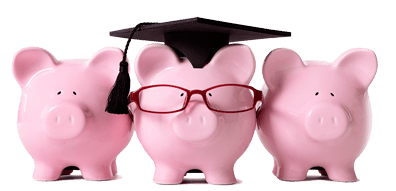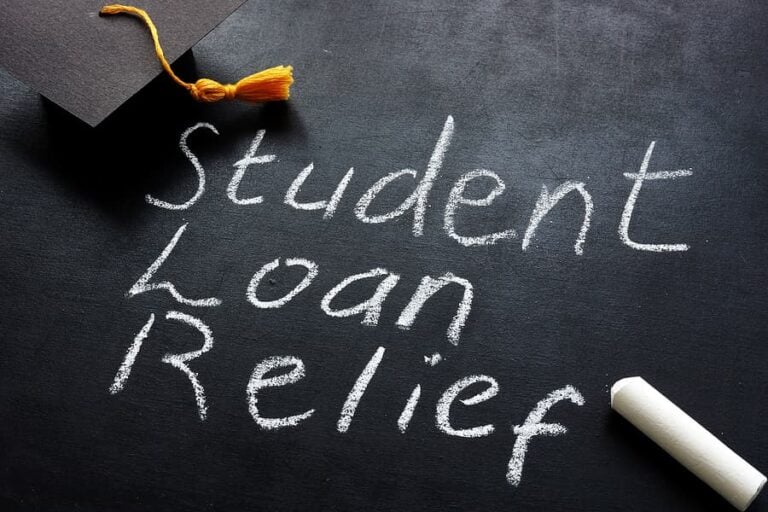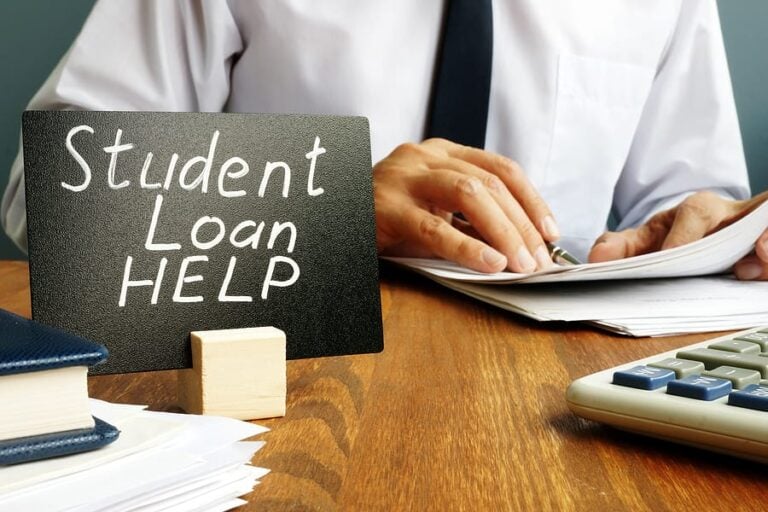Understanding Student Debt
Student debt is a growing problem in the United States. For many students, attaining a college degree is close to impossible without some form of borrowing money and building student debt. In fact, student loans are nothing short of huge business in the United States – one that some say has reached crisis proportions for those under the age of thirty that are now burdened with repaying that student debt. The numbers are staggering, as aggregate student loan debt now exceeds $1.45 trillion, with this stratospheric figure spread among 44.2 million young Americans.
To further illustrate the gravity of student loan debt levels, aggregate U.S. credit card debt is actually $600 billion lower – and this credit card debt, though onerous, is held by individuals of all ages, many of whom have been gainfully employed for several years. Meanwhile, over 70% of college graduates from the Classes of 2016 and 2017 are beginning their professional lives burdened with average student debt levels exceeding $37,000 that already require an excess of $350 in average monthly payments.
Benefits of Student Debt
Reduce Your Debt
Shrink your debt and grow your savings with United Debt Settlement. We’re your partners in chipping away at those towering credit card balances.
Avoid Bankruptcy
Steer clear of bankruptcy’s shadow with proactive debt management. Our experts craft escape routes that protect your credit and your peace of mind.
Financial Freedom
Step into a life free from debt. Our tailored strategies are your blueprint to a future where your finances are yours to enjoy, not owe.

How Does It Work?
Experienced Professionals
Our team comprises seasoned experts who have successfully navigated countless clients towards a debt-free life.
Customized Solutions
We understand that every financial situation is unique. That’s why we craft bespoke debt relief plans tailored to your specific needs.
High Success Rate
Our track record speaks for itself. Our effective strategies and dedicated approach ensure tangible results.
Confidential Consultation
Your privacy is paramount. Rest assured, our consultations are carried out with the utmost discretion and confidentiality.
Debt Relief Reviews
The Big Picture with Student Debt
There are no shortage of lenders offering loans to students. Lenders include federal and state governments, along with colleges universities. Students seeking financial assistance for student debt must complete the FAFSA (Free Application for Federal Student Aid) form, which is utilized to apply for most types of federal, state and school funded programs.
The U.S. Department of Education has established guidelines for eligibility including but not limited to an applicant’s income level, family income and expense levels, and the number of siblings attending school concurrently. As would also be expected, a borrower’s credit profile and credit score are factors in determining eligibility, with many students requiring a co-signer to secure a loan.

There are two major sources of student loans – federal and private. Though there is a common misperception that they are similar in nature, in actuality, the two types of student loans can vary widely in interest rates and terms. Private loans often require a higher credit score and/or co-signer and frequently carry higher interest rates than federal student loans. In addition, private loans are never subsidized – the borrower is always responsible for interest expense, both during school and following graduation. Let’s take a look now at the most common types of federal student loans.

Federal Student Loans
Each year, over eight million students avail themselves of federal student loans through the William D. Ford Federal Direct Loan Program. This program includes Direct Subsidized, Direct Unsubsidized, Direct PLUS and Direct Consolidated loans, and these loans comprise over 80% of all federal loans made to students. The most common type of federal student loan is the Stafford loan, and it is paid directly to the student borrower. The Stafford loan typically comes with low interest rates and favorable consolidation repayment options while requiring no credit check or collateral.
Borrowers of subsidized Stafford loans are not responsible for making payments towards their student debt (and any associated interest expense, as the government covers it) until after graduation. These loans are reserved for students from families showing annual household income of under $50,000. Interest rates on subsidized Stafford loans are generally under 4% with a maximum ceiling of $23,000 of borrowings while the student pursues an undergraduate degree. Unsubsidized Stafford loans accrue interest expense and build student debt while the student is enrolled, although the borrower may defer payments (during which interest expense compounds) until after graduation. The annual limit for unsubsidized Stafford loans can be as high as $12,500, with typical interest rates below 4%.
Another type of Federal Student Loan is known as the PLUS loan, which stands for Parent Loans for Undergraduate Students. Parent PLUS loans are disbursed directly to parents funding the undergraduate education of a dependent child, while Grad PLUS loans are disbursed directly to those students pursuing a graduate degree. Unlike Stafford loans, PLUS loans have no maximum amounts allowed but carry higher interest rates exceeding 6%.

Student Debt Consolidation
Consolidating your student debt make sense for the student borrower seeking the simplicity of one lower monthly payment at one fixed interest rate, as opposed to making higher combined payments to a variety of separate creditors. However, the benefits of these debt consolidation loans come at a price, as they usually extend loan amortization periods considerably – sometimes for as long as thirty years – and can significantly increase total interest expense over the life of the loan. Loan amortization defines a specific schedule of monthly payments designed to pay back the principal on a student loan at a specific interest rate over a given duration of time. Because of accrued interest expense from student debt, it can often take several years of making consistent monthly payments before a significant amount of principal is actually paid down, similar to the case of a home mortgage.

Private Student Loans
As is the case with any loan, the day will come when student loan debt must be paid back, and some unsubsidized loans require repayment while the student is still enrolled. However, many subsidized and unsubsidized loans include repayment grace periods or offer the option of deferment until graduation. Many students avail themselves of exit counseling prior to graduation, during which they are informed of various student debt repayment options.
With so many recent graduates burdened by significant student loan debt, it should come as little surprise that the current student loan delinquency rate (debtors whose payments are at least ninety days late) resides at a rather robust 11%. Therefore, the amount a student borrows, and at what terms, can have a significant impact upon that individual’s credit profile and lifestyle following graduation. Accordingly, many younger Americans have been forced to delay home ownership, marriage – and even car ownership, as a result.
Financial Assistance for Student Debt
If you are struggling with timely repayment of high levels of your student loan debt, contact us here at United Settlement to discuss your debt relief options. Getting financial assistance with your student debt is just a phone call away. There are also student loan forgiveness programs available for high levels of student loan debt.
Top Videos Related to Credit Card
Medical Debt Help
Learn how to approach medical bills before it gets too late. Explore proven medical debt relief options with certified debt professionals.
Debt Management
Debt Management Plans (DMP) - A program managed by a credit counseling agency working on your behalf to negotiate lower interest rates & monthly payments with your creditors. Learn the pros & cons of debt management plans.
Debt Consolidation
Debt consolidation loans combine all credit card debts into one monthly payment. Decrease the chance of submitting late payments with a debt management plan.
Education Center

Credit Cards And Your Credit
Student Debt FAQ
For many of the 44 million young Americans saddled with significant student loan debt, the choice to consolidate student loan obligations can make a lot of sense. Student loan consolidation not only offers the opportunity to simplify the monthly payment process through one streamlined payment per month, but it can also relieve a measure of financial pressure by reducing the overall monthly payment. Payment plans can be structured according to income level, so if a borrower’s income is low, the required payment can be reduced sharply. However, this reduction comes at a significant price. Even though the monthly payment gets reduced, the principal amount owed on the loan does not. Therefore, the amount of time that it will take to fully repay the loan extends, and this results in higher total interest expense over the life of the loan. Separately, there are a number of student loan forgiveness programs that can help alleviate the stress that comes with high levels of student loan debt. The Public Service Loan Forgiveness (PSLF) program is available to full-time employees of federal, state, and local government agencies, as well as employees of 501(c)(3) non-profit organizations, as well as non-profits that provide qualifying public services, and Peace Corps volunteers. Requirements for PSLF loan forgiveness include a full ten years of on-time monthly payments (120 payments), full-time public service employment at a qualified employer, and participation in a qualified income-based repayment plan. Federal Perkins Loan cancellation is useful for full-time educators including teachers, librarians, speech language pathologists and professionals within HeadStart programs. Additionally, full-time firefighters, nurses, members of law enforcement and the military also can qualify for Perkins Loan Cancellation. Under this program, it is possible to have 100% of a remaining Perkins loan obligation forgiven within five years, with forgiveness granted at 15% in years one and two, 20% in years three and four, and the remaining 30% in year five. The Teacher Loan Forgiveness (TLF) program awards qualifying teachers a tax-exempt reduction ranging from $5,000 to $17,500 in principal owed on student loan debt. To qualify, a teacher must have worked full-time for five consecutive years at a certified low-income elementary or secondary school included on a list published annually by the U.S. Department of Education.
Like any debt, student loans can impact a borrower’s credit in both positive and negative ways. Establishing a consistent track record of repayment over time will lead to a stronger credit profile, and student loans, with their lengthy repayment periods, offer this opportunity. However, just as with credit card debt, falling delinquent on repayment will lead to negative entries on a credit report and negative credit score impact.
According to Experian, 83% of those Americans who do not own a home claim that student loan debt is holding them back from purchasing a dwelling. However, student loan debt does not have to be a major stumbling block to home ownership. Mortgage lenders will be most concerned with a potential borrower’s repayment history and how any existing debt could impact the ability to make timely mortgage payments. The debt to income ratio is an important metric that lenders examine, and a ratio of 43% or lower is desirable. Calculate this ratio by dividing the sum of all monthly debt payments (student loans, credit card minimums, auto loan, etc.) by the amount of monthly pre-tax income.
Under current law, in most circumstances, student loan debt can not be discharged in a Chapter 7 or Chapter 13 bankruptcy. However, student loans can be discharged if it can be proved that repaying them would cause “undue hardship” on the borrower or the borrower’s dependents.
Funds from student loans are limited to be allocated toward qualified educational expenses only. Therefore, it is not permissible to take out a student loan to pay off existing credit card debt. Additionally, although it is possible to consolidate credit card debt with student loans, most personal installment loans come with higher interest rates than fixed rate Federal student loans, making the likelihood of achieving a lower blended interest rate low, even if the installment loan interest rate is better than the interest rate on the credit card debt. Finally, when consolidating student loan debt, it is best to consolidate Federal student loans and Private student loans separately.
Master Your Finances:
Our Latest Insights & Articles




